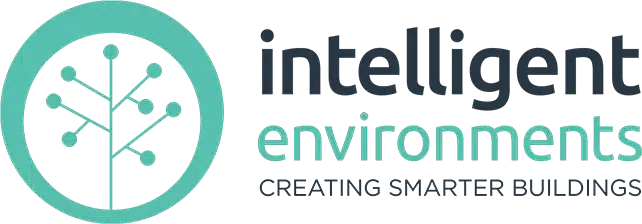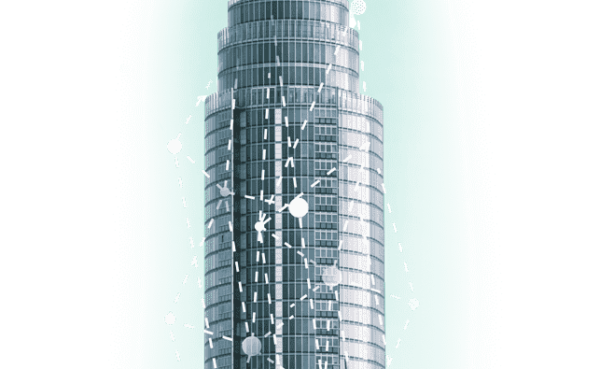WHY DO WE NEED A BUILDING TECHNOLOGY PARTNER?
Intelligent Environments Ltd promotes itself as your building technology partner. You may well wonder,
“Why do I need a partner?”
This post seeks to explain not only why an ongoing partnership with your controls supplier is important, but also explains the continuing benefits for your lighting system from such a relationship.

How Will a Building Technology Partner Ensure the Longevity of Our Lighting System?
Initial Set Up of Your Lighting System
It is likely that your lighting control system, for example, will have been specified as part of the original construction. As the end client you may even have had some input into the functionality that would be required from the lighting system?
However, the reality of construction in New Zealand is that the emphasis still tends to be on “immediate” cost-savings above all else, and with lighting controls, HVAC, and other building technology usually included in the electrical or mechanical contracts, the requirements are often dumbed down.
As well as for potential cost-savings, another reason you may not get what you were expecting from your lighting system and other building technologies could be tight deadlines. In many cases contractual terms carry penalties if the project isn’t handed over on a certain date, and pressure is put on every trade at the of the project timeframe to comply with the date set for practical completion. As the building technology systems cannot be commissioned until all equipment has been installed, when things are behind schedule timeframes get tight.
For the lighting control system to be programmed not only the DB equipment and cabling must be installed, but every light fitting must be in place and all cabling or connection faults resolved. With emergency systems the feed to the emergency lights must be continuous for 24-36 hours or test reports will show the lights as failed.
The controls suppliers may have allowed several months to commission the system, but when delays push the project out, and equipment is not installed and fault finding completed, it is common for those “months” to be reduced to a few “weeks”. Programming is then completed to “meet spec” and be signed off, but no time is available for further liaison with the end client. Gerd Altmann
If you are fortunate, the lighting system supplied will not have been compromised for cost-saving purposes and will still be a certified DALI-2 (wired) or DALI+ (wireless) system to meet NZ lighting control standards. As it is not then a proprietary system it will be capable of expansion as required and can be re-programmed to meet the end client’s actual needs.
The system we use, zencontrol, allows the majority of changes to be made remotely, without the requirement of additional site visits.
Defects and Liability
Once the project has been completed and signed off then the developer and contractors have fulfilled their contractual obligations and it’s now over to the building owner or occupier to make sense of the space.
The defects and liability period will vary for the different components of the building, but for building technology it is usually 12 months.
Any lighting system equipment that develops faults within that 12 month period will be replaced without charge. Additionally any errors that show up in the programming of the lighting controls will need to be put right at no charge. This would include mistakes, omissions, or non-compliance with the original specification. For example, a sensor that has not been programmed to turn meeting rooms off after 15 minutes of non-occupancy.
During the defects and liability period, when Intelligent Environments Ltd has commissioned a zencontrol lighting control system, we provide regular reporting on the health of the entire lighting system (including emergencies when applicable). This highlights any issues with any lights or drivers which can then be attended to by the electrical contractor under their defects and liability processes. Read more about this additional service.
Changes to the lighting control system required once the building occupier has moved in, has got accustomed to the space and realises that some aspects of what was demanded in the spec just don’t work for them, will not be covered under defects and liability.
In those instances, the controls supplier will need to be contracted to make desired changes at their standard maintenance rates.
Post Practical Completion
Once the building owner or occupier has moved in and had time to become accustomed to the installed technology and its functionality, we would then recommend that the relationship between the building occupier and the specialist controls company should commence.
As above, Intelligent Environments provide regular reports on the lighting system during the defects and liability period (usually 12 months from practical completion), but would also recommend, if changes are required by the occupier, that a full evaluation be carried out with both parties (client and IEL) working together to:
1. Ensure that the client’s facility management team fully understands the installed systems and the functionality of the controls.
2. Confirm that reports are being sent to appropriate personnel, they are understood, and are being acted upon.
3. That all required programming changes are fully documented, understood, and agreed upon before the changes are made.
Additionally the client may wish to consider the benefits offered by a continuing Service + Maintenance Plan with IEL.
Changes to Consider
-
- Energy Reduction
Fine-tuning the controls for the lighting system can have a significant impact on the energy consumed. By ensuring light is at the right level, and in the right location, there can be considerable power savings achieved.
Just looking at PIR sensors, where they are located, and what their ‘time out’ period is set to can reduce power waste substantially. In a meeting room where people are sitting quite still, it may be appropriate to have a longer timeout, but in an open plan area where there is lots of staff movement, a reduction of the timeout period may have good results.
Hybrid working, with staff working from home as well as the office, may mean certain areas of the building are at times unoccupied. Reducing timeouts to 10 minutes from 20 minutes will help achieve your energy reduction goals, but ensure lights come on when someone walks in.
Tailoring your lighting system to address such instances not only results in energy saving but also demonstrates your company’s commitment to reducing its carbon footprint.
-
- Integration
Integrating the lighting control system with your BMS, security, or other systems provides continuity of control but also allows the facility manager to ensure heating/cooling etc also reflects occupancy so wasted energy is reduced.
-
- Daylight Harvesting
Often employed for its energy saving potential, daylight harvesting has added benefit for the wellbeing of staff by ensuring the areas are not ‘over illuminated’ when sunshine and artificial lighting combine to illuminate areas nearest to windows. With daylight harvesting, lights will dim when high levels of natural light are available, then the lights will brighten when the level of natural light falls.
-
- Maintained Illuminance
LED lighting has become common due to its flexibility and length of life. However new LEDs are most often over-bright in their initial output, gradually reducing to about 80% output, which is then retained for most of their life span. In order to prevent over-illumination initially, the lighting can be programmed to reduce output for that initial period. This also means staff don’t become used to overly bright environments, and report issues when the lighting reduces to what will become the standard for the remaining years of its life span.
Over-illuminance can be responsible for considerable staff discomfort, and a leading cause of eyestrain and headaches.
-
- Pathways of Light
DALI-2 and DALI+ sensors provide the added advantage of creating notional corridors “pathways of light” so that anyone working late can see how to exit the building, and feel safe with the benefit of background illumination (at a reduced output). The whole of the building no longer needs to be fully illuminated because one staff member is working late. At the same time, that staff member does not feel isolated or unsafe with a single area lit, while the rest of the floor is in darkness.
-
- Building Analytics
The zencontrol DALI-2 and DALI+ system with its two-way communication between all DALI-certified devices, provides a constant stream of data that is used to create dashboards. These dashboards provide a seamless interface with the lighting system and display a wide variety of data in easy-to-understand formats. These dashboards can show energy data, the status of the system i.e. lights in which areas are on or off, pinpoint any maintenance issues, and in the case of emergency lighting, assist with compliance with continuous monitoring, scheduled testing, and reporting on all emergency devices.
Having such information to hand that can report on all elements of your lighting control systems (including emergency) is invaluable for maintenance purposes. You can easily locate a light fitting that has failed, see when it was last replaced, view any previous issues, and determine whether it is covered under the manufacturer’s warranty.
-
- Enhanced Analytics
The enhanced analytics using the DALI system data combined with zencontrol software allows the creation of a variety of customised dashboards that can display information such as space utilisation, heat maps, and even environmental data (with the installation of appropriate sensors) such as temperature, CO2, VOC, humidity, pressure, etc. For clients that require their facility manager to have a firm handle on how their building is functioning, this provides an upgrade path to ensure complete visibility.
-
- Carbon Neutral Maintenance
By allowing Intelligent Environments to be your building technology partner we can ensure the longest possible life for your lighting control system. Software updates can be applied as necessary to futureproof against any vulnerabilities that may arise in the future, and any new devices to expand or replace existing equipment are all backwards compatible.
With the cloud-based zencontrol software the majority of fine-tuning can be undertaken remotely. Changes can be instant and carbon neutral as not site-attendance from an engineer is required.
Summary
With Intelligent Environments as your building technology partner, the integrity of your lighting control system is assured for life.
What is deemed to be a “smart building” now, will change in the future.
You may want to implement changes at once, but it is also likely that you will want to make continual changes.
For your system to be operating at its optimum it will need continuous fine-tuning as requirements change and new technology becomes available.
Commercially partnering with us is a fiscally sound decision. Payback will be easily covered by energy savings and longer service life of devices that are continuously monitored. Additionally, you will be demonstrating corporate social responsibility by avoiding waste while ensuring staff wellbeing.


